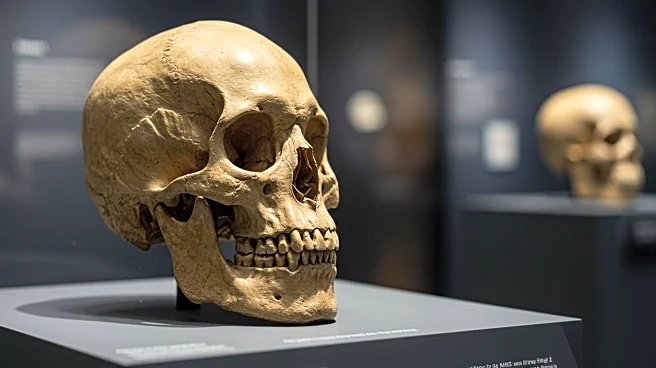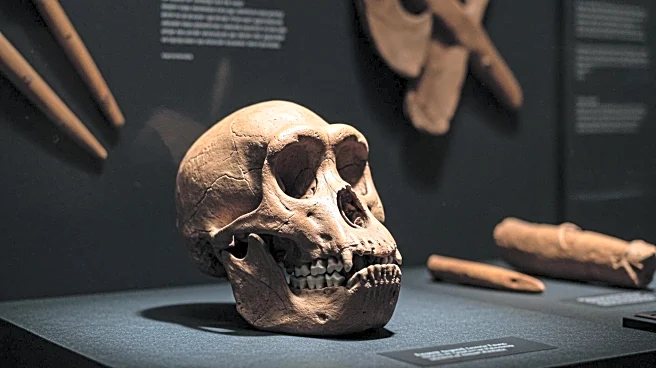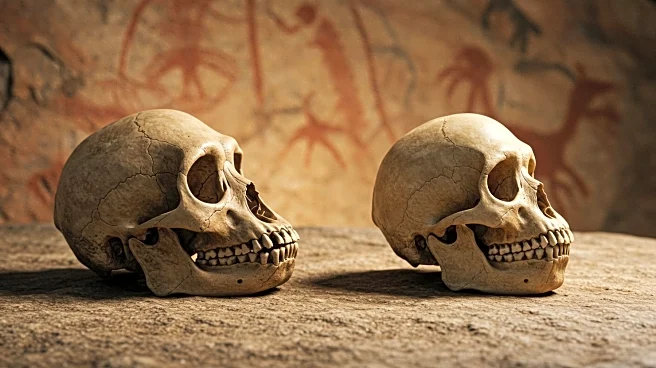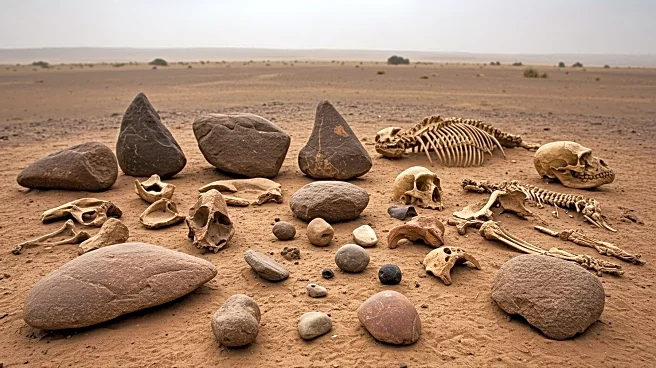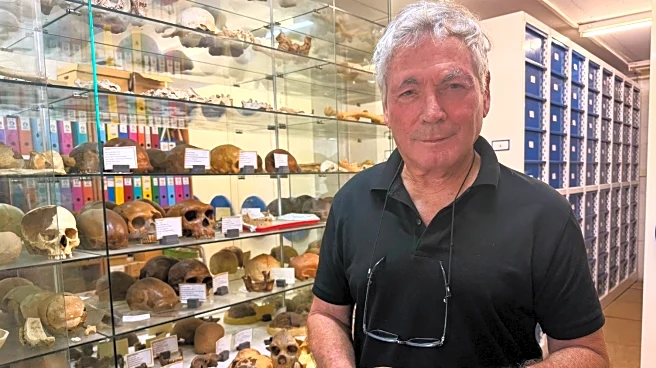What's Happening?
A recent study conducted by the Institut de Paléontologie Humaine in France has provided new insights into the age of a mystery hominin skull discovered in 1960 in the Petralona Cave, northern Greece. The skull, which has puzzled scientists for decades due to its ambiguous features, has been dated using advanced isotopic techniques. The study, published in the Journal of Human Evolution, utilized uranium-series dating to determine that the calcite coating over the cranium began forming at least 286,000 years ago. This method measures the decay of uranium isotopes into thorium, a process reliable in closed systems like caves. The findings suggest the skull could date anywhere between 277,000 and 539,000 years ago, depending on its stratigraphic position within the cave. The Petralona skull, morphologically distinct from both Homo sapiens and Neanderthals, represents a primitive population that may have coexisted with early Neanderthal lineages during the Middle Pleistocene.
Why It's Important?
The dating of the Petralona skull is significant as it provides a clearer timeline for human evolution in Europe. This fossil holds a key position in understanding the evolutionary history of hominins, particularly during the Middle Pleistocene, a period marked by substantial evolutionary changes. The study's findings contribute to the ongoing debate about the skull's place in the human lineage, offering a more precise chronology that supports the coexistence of this hominin with early Neanderthal populations. This research enhances our understanding of human ancestry and the evolutionary processes that shaped modern humans, potentially influencing future studies in paleoanthropology and human evolution.
What's Next?
Further research may focus on the broader implications of the Petralona skull's age and its evolutionary context. Scientists might explore additional isotopic dating methods or examine other fossils from the same period to corroborate these findings. The study could prompt renewed interest in the Petralona Cave and similar sites, encouraging more detailed investigations into the environmental conditions and evolutionary dynamics of the Middle Pleistocene. As researchers continue to refine dating techniques, the Petralona skull may eventually be placed more definitively within the human evolutionary timeline.
Beyond the Headlines
The study raises questions about the ethical and scientific challenges of assigning specific ancestral groups to fossils with ambiguous features. The Petralona skull exemplifies the complexities of human evolution, where morphological differences can lead to varied interpretations. This research underscores the importance of interdisciplinary approaches in paleoanthropology, combining geological, biological, and archaeological methods to unravel the mysteries of human ancestry. It also highlights the need for careful consideration of fossil preservation and the potential for new discoveries to reshape our understanding of human history.
